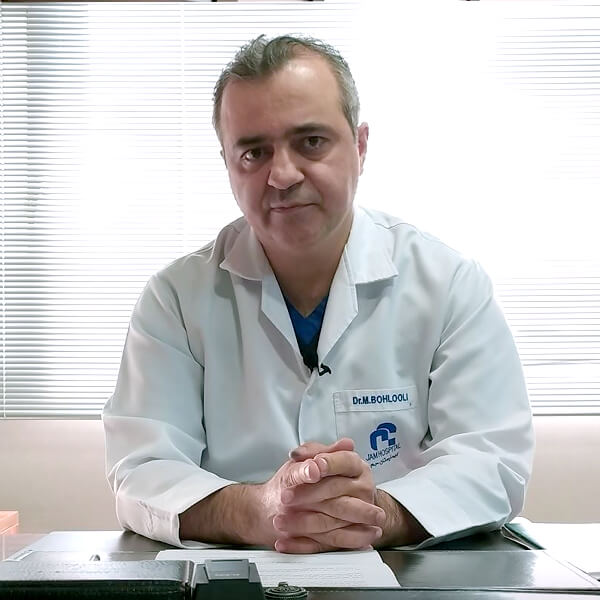Dr. Parham Halimi Asl
Urology Specialist and Employee at Jam Hospital
Dr. Parham Halimi Asl, Urology Specialist and Employee at Jam Hospital, explains about Bladder Tumors and its diagnosis.
The text of Dr. Halimi Asl‘s speech
In the Name of God, I am Dr. Parham Halimi Asl, Urology Specialist and Employee at Jam Hospital, Thanks to Noor Charity for this talk. In this video, we want to talk about bladder tumors.
A bladder tumor is one of the common tumors in the urology system that causes a series of symptoms in patients that we need to pay attention to so we can diagnose and treat it early.
The main symptom of this disease is blood in the urine, and an important point is that this bleeding is painless. When it’s painless, a person usually wakes up one day and sees blood in their urine, and because it’s painless, they usually don’t pay attention to it. Sometimes it resolves on its own, meaning the person thinks it might be caused by some medication or food they consumed.
After one or two weeks, it might not be noticeable, and then blood appears in the urine again. Since it is painless and without burning or discomfort, the person may again ignore it. This is a very important point that we should know: blood in the urine, especially without pain and other symptoms like burning and frequent urination, is very significant.
In this regard, I wanted to draw your attention. When a person sees blood in their urine, they should see a doctor. The doctor usually requests a urine test and an ultrasound for the person, and through this ultrasound and test, the situation is almost determined.
In the urine test, blood is usually seen. If an infection is also present, burning during urination might be added to the patient’s symptoms. And with the ultrasound, some masses might be seen in the bladder, and the diagnosis is made based on that.
The doctor orders a cystoscopy to completely view the inside of the bladder. It’s similar to an endoscopy, where the inside and the urinary tract, prostate, and bladder are viewed. If a mass is present, it is scraped and the tumor is removed.
The most important issue regarding bladder cancer is knowing what factors predispose a person to bladder cancer. The most important factor is smoking – smoking, alcohol, petroleum products, and working with dyeing materials. The most important factor is smoking – smoking, alcohol, petroleum products, and working with dyeing materials predispose individuals to the development of this tumor. Even after the tumor develops, if the person continues smoking, the likelihood of the tumor recurring increases significantly. Narcotics and smoking are at the top of the list for recurrence of this disease, which is very significant.
Treatment is usually done surgically and is typically minimally invasive if diagnosed on time. In advanced cases, the person might lose their bladder entirely, meaning we might need to remove the whole bladder. Therefore, in the early stages, if the person seeks medical attention, it is easy to go into the bladder with an endoscope, scrape the tumor, and completely burn the tumor base to prevent it from regrowing.
The more important point is that the patient should follow up regularly, meaning the patient should have ultrasound and tests periodically as per the doctor’s recommendation to ensure the tumor does not regrow.
Another important point is that some people undergo ultrasound without any symptoms and the ultrasound shows a tumor in the bladder. Sometimes it’s asymptomatic, meaning it doesn’t always present with symptoms like blood in the urine, burning, or other symptoms.
Therefore, check-ups are recommended for individuals at various ages. We usually recommend that people over 30-40 years old have a baseline ultrasound to catch any issues early if there are any problems. So, annual tests and a basic ultrasound are very, very beneficial.




